Firearms Technical Trivia, November 1999:
 |
It is commonly expected that the operating mechanism of a semi-automatic, or self-loading pistol will do a number of things. It is intuitive that the pistol must have reciprocating parts to manage the insertion of the fresh cartridge into the chamber, the firing of the cartridge, the extraction of the spent casing from the chamber, the ejection of the spent casing, and the insertion of a new fresh cartridge into the chamber. What is less intuitive is the extent of the firearm's mechanism that goes into solving the problem of locking and unlocking the breech block.
Pistol cartridges will generate pressures measured in the tens of thousands of pounds per square inch when fired. These pressures want to force the head of the case, and consequently, the breech block mechanism, be it slide, toggle, or bolt, to the rear. As a result, there must be some sorts of mechanism in place to hold the cartridge inside the chamber of the firearm during firing. The engineering problem is compounded by the fact that the high pressure event inside the chamber/barrel only lasts a very short amount of time, not more than .001 seconds, and thus, the mechanism must be designed to use the available energy within a very short, precise interval.
BLOWBACK MECHANISM
This is the breech mechanism that is used in many small self-loading pistols that fire medium to low powered cartridges. It is generally acknowledged that the most powerful cartridge a small, blowback operated pistol can use is the 9x18mm, or 9mm Makarov. However, there have been successful blowback designs for rounds as powerful as the 9mm Parabellum and the 9mm Largo. These remain the exception, and not the rule. In the small blowback operated self-loading pistol, the breech, or slide, is held against the cartridge head by a spring. When the firearm is discharged, the bullet is pushed out of the muzzle with great rapidity, and at the same time, the case is pushing the slide back just fast enough to extract and eject the fired case after the pressure has fallen to zero. If the slide were to open too rapidly, while there is still a high pressure situation in the barrel, the case will likely rupture, and powder gas will escape to the rear - a very unpleasant event!
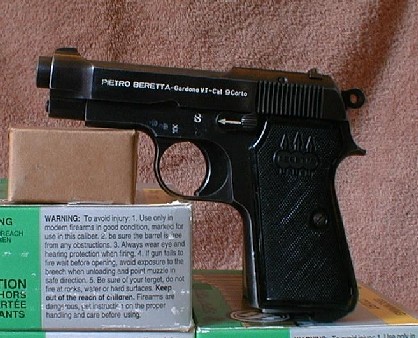
Beretta Model 1934, Blowback Operation, Caliber 9mm Corto Image Credit: Kyrie Ellis |
Examples of blowback operated pistols include the Browning Models 1903, 1910, and 1922, the Mauser 1910, 1914, 1934, and HSc, the Walther PP and PPK, the Soviet Pistolet Makarova, the Czech Vz50 and Vz70, the Astra Models 300, 400, and 600, and the Beretta Models 1915, 1934, and 1935. So common is the blowback operating system that to name all the pistols that used it would take many many kilobytes to do so! |
DELAYED BLOWBACK MECHANISM
However,
there are other principles besides weight which can be used to slow down,
or delay a blow back action. In a straight blowback action, the case
pushes the slide or breech directly to the rear, so that the full thrust
of the case's rearward momentum is exerted to the rear. Instead of
using additional weight, the rearward motion of the slide or breech can
be delayed by setting up the mechanism so that the thrust to the rear is
operating at a mechanical disadvantage. Or, as Hatcher puts it "So
that it takes more push to produce the same amount of motion, or the same
push to produce less motion."
| One example of this is the Czech Vz52 pistol. In order for the slide to move to the rear under the impetus of the fired case, the rollers of the delay mechanism must first be forced from their recesses in the slide back into the roller mechanism - a process which requires the reward movement of the slide to exert force in a perpendicular plane prior to being able to move to the rear. Because of this delay mechanism, the Vz52 is capable of using the powerful 7.62x25mm cartridge. | 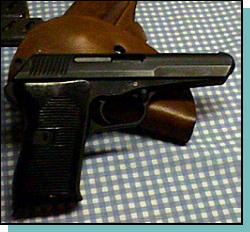
VZ52 Pistol, Delayed Blowback Operation, Caliber 7.62x25mm Image Credit: http://members.tripod.com/~Tokarev/cz52.htm |
SHORT RECOIL MECHANISM
This is the mechanism that is used in the vast majority of self-loading pistols chambered for the medium to powerful class of cartridges such as the 9mm Parabellum, .38 ACP, 9mm Largo, .38 Super, .40 Smith & Wesson, 10mm Automatic, and .45 ACP to name a few.
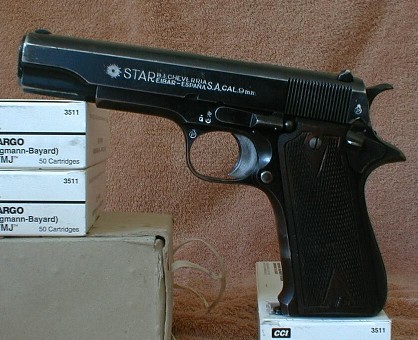
Star Model A, Short Recoil Operation, Caliber 9mm Largo Image Credit: Kyrie Ellis |
In
some cases, the slide is locked to the barrel by interlocking grooves on
the top to the barrel and the roof or ejection port of the slide.
This is the method favored by Browning inspired designs such as the High
Power, the Colt Government Model, the Star A, B, M, P, Super, the Glock,
and the SIG Sauer designs.
In others, the slide and barrel are locked by means of a pivoting locking wedge on |
Still others, notably the Luger designs are locked by a knee-like toggle. As long as the knee is pushed directly to the rear, the breech remains locked. However, when an upward force is applied to joint of the knee or toggle, the toggle can break and rise vertically, allowing the breech block to move to the rear. On firing the Luger, the barrel extension and breech block assembly move to the rear as a unit for a short distance. Then, the toggle strikes the "ears" on the rear of the Luger's frame which cams the "knee" upward and breaks the toggle.
LONG RECOIL MECHANISM
At the moment of firing, the breech and barrel are locked together. They recoil to the rear a set distance (usually just longer than the length of a cartridge), until movement is arrested by a stop provided for that purpose. At the rearmost position the breech mechanism is caught and held by a latch. The barrel is then forced forward by its return spring, unlocking from the breech as it moves to the fore. As the barrel goes
| forward, the empty case which is held to the breech by the extractor, is ejected. When the barrel reaches its in battery position, it strikes a lever, which drops the latch and allows the breech to move forward. Not surprisingly, there were comparitively few successful pistols that used this method of operation. The Hungarian Frommer Stop, is one such example, and functions quite well, despite the very complex mechanism. | 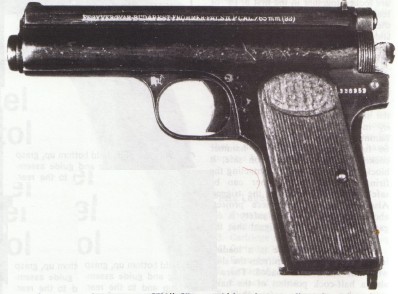
Frommer Stop Pistol, Long Recoil Operation, Caliber 9mm Browning Short |
GAS MECHANISM
SUMMARY
Note: Data for this month's trivia page was gathered from:
Boothroyd, Geoffrey, The Handgun ,The Sportsman's Press (London, 1988) ISBN 0-948253-27-4
Hatcher,
Julian S., Hatcher's Notebook, Stackpole Books (Harrisburg,
Pennsylvania, 1966) ISBN 0-8117-0795-4
Hatcher's
Notebook is available from Amazon.com. Click on the image to
order:
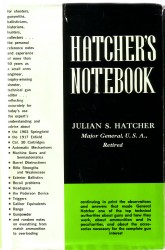
The
Handgun is available from Amazon.com. Click on the image to order:
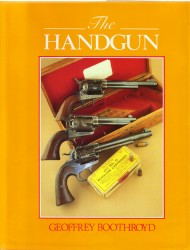
|
|